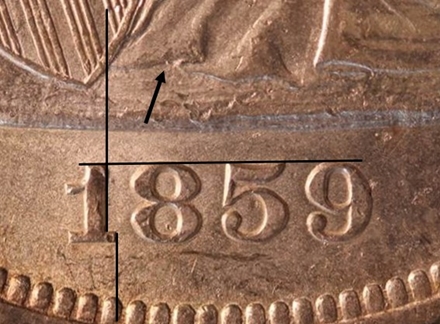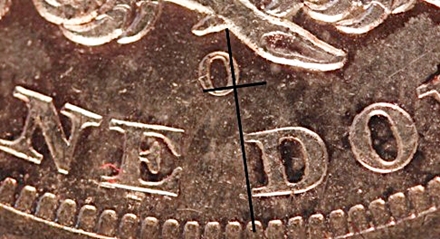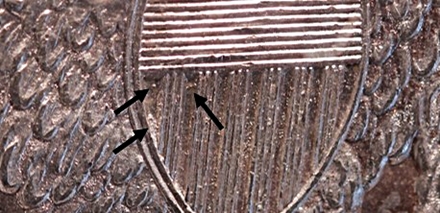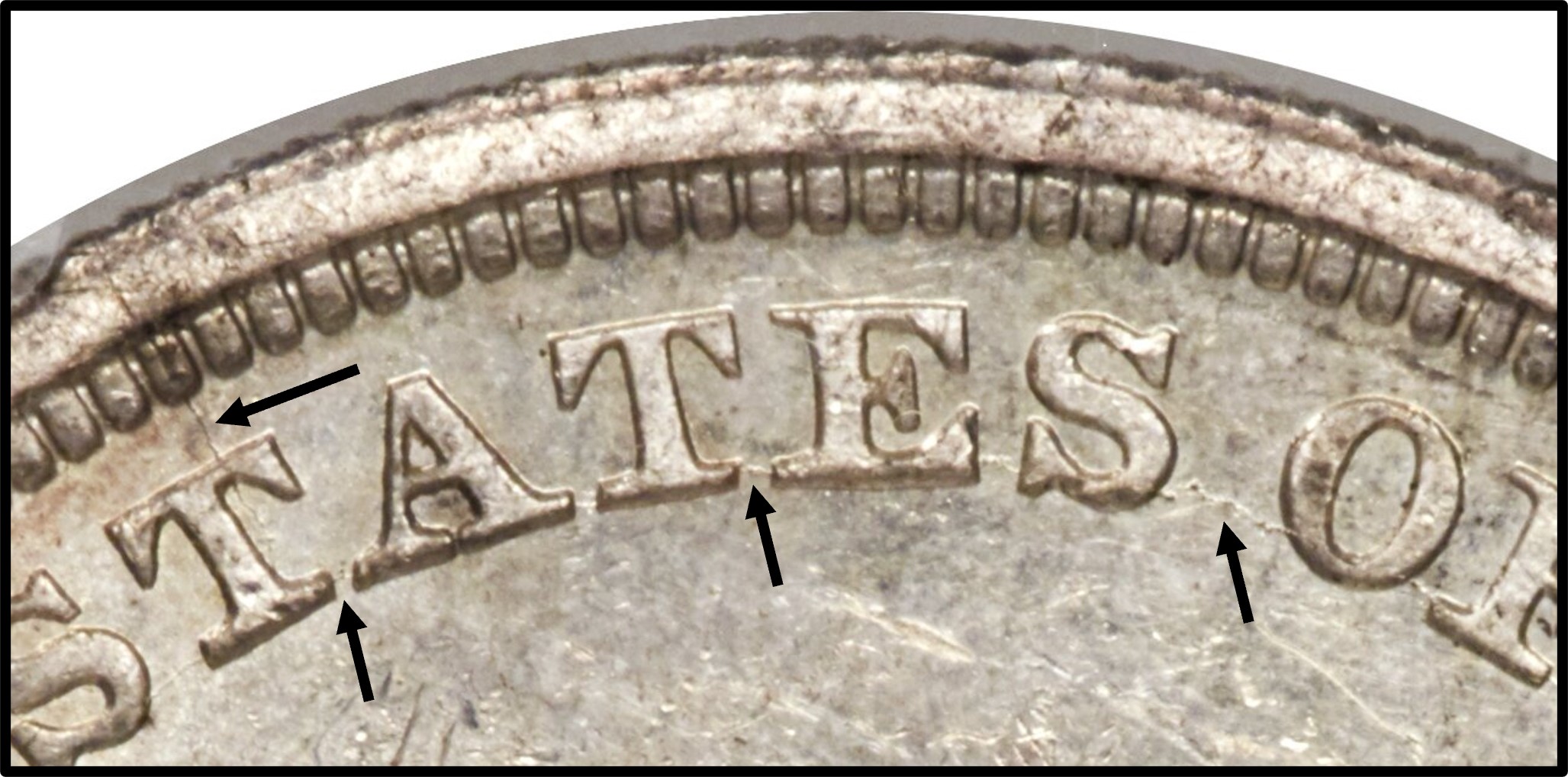|
|
Comments: This is the only use of Obverse 2 and the second and final use of Reverse B in 1859. Reverse B is transitional, used for two additional 1860-O die marriages. |
Obverse 2 The photo below shows the Obverse 2 attribution grid.  1859-O Obverse 2 attribution grid The Obverse 2 date is the farthest right of any for the year. An additional die marker is a tiny lump on the hem of the gown above the 8. The arrow in the photo points to this feature.
|
The photo below shows the mintmark position for Reverse B.  1859-O Reverse B mintmark Reverse B exhibits several irregularities in the upper left shield recesses, shown below. The most notable and easiest to see is the strong dot at the top of Recess #1. This dot becomes less notable as the die state progresses, but is always visible.  1859-O Reverse B die markers
 |
| Photo credits:
Obverse 2: 1859-O PCGS MS63, from the Osburn-Cushing reference collection. Reverse B: 1859-O NGC MS60 CAC Gold, from the Osburn-Cushing reference collection. |
